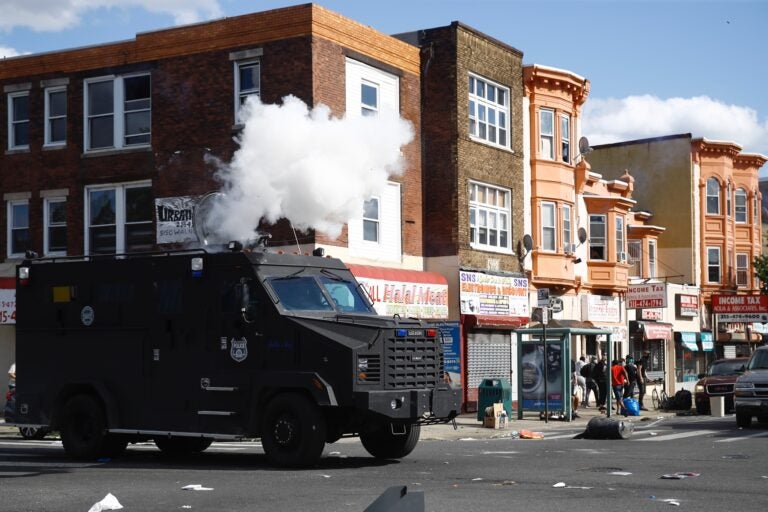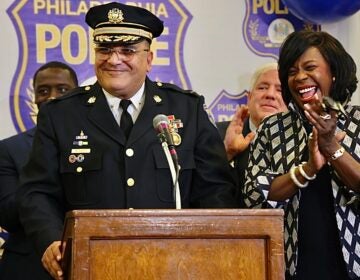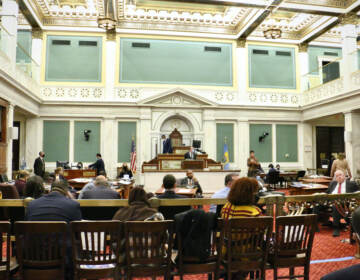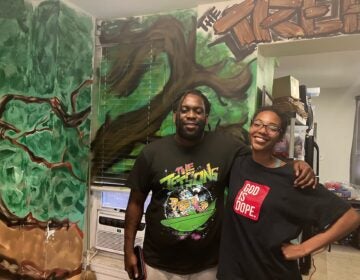Philly could ban using tear gas, rubber bullets on protesters
Despite a police moratorium on the practice, Philly City Council is expected to pass a ban on police using tear gas and rubber bullets against protesters.
Listen 17:05
Police deploy tear gas to disperse a crowd during a protest Sunday, May 31, 2020, in Philadelphia over the death of George Floyd. Floyd died May 25 after he was pinned at the neck by a Minneapolis police officer. (AP Photo/Matt Rourke)
On Thursday, Philadelphia City Council is expected to pass a ban police officers’ use of tear gas, rubber bullets and other “less lethal munitions” against protesters.
The city’s police department already put a moratorium on these tactics after police clashed with racial justice demonstrators in late May and early June. That policy was put to the test Monday night when violence erupted in response to the death of Walter Wallace, a Black man who was shot and killed by police in the city’s Cobb’s Creek neighborhood.
Darryl C. Murphy of WHYY’s PlanPhilly and WHYY reporter Ximena Conde join us to explain why residents and some city council members pushed to make that ban law. They covered more than six hours of public hearings on the bill, in which testified about what they experienced when police used these tactics on 52nd Street in West Philly and on I-676.

Hear the whole story on The Why
Interview highlights
On what residents near 52nd Street told City Council
DARRYL: They described police officers in riot gear firing tear gas canisters and rubber bullets throughout the neighborhood. And they talked about how that impacted the neighborhood during the day …
In fact, some of the most troubling testimony came from a woman named Elizabeth Bhoj. She and her husband, they’re physicians who live in West Philly. They came to the protest wearing scrubs just so the cops would know they were medical personnel, as well as the people who might have needed their help. She said once the police started unleashing tear gas canisters on the crowd, they ran down 52nd Street to Walnut Street.
“We saw tear gas canisters land well within what is a mostly Black residential part of the neighborhood. No protesters had been anywhere near those houses.” And Dr. Bhoj, she said while she and her husband were treating some of the folks who had been caught in a cloud of tear gas, “we noticed that a Black woman ran out of one of the houses in front of us carrying her crying daughter, who looked like she was about six years old. She told me that a canister had landed on the roof of their front porch. It had gotten in this child’s eyes.”
She said they washed out the little girl’s eyes as best they could and tried to calm her down. But then she said people, including a bunch of elderly folks, started evacuating their homes, trying to get away from the tear gas.
On Police Commissioner Danielle Outlaw’s response
XIMENA: Outlaw kind of pushed back on the idea that all of the protests that took place at the end of May and early June were protected under the First Amendment … She also said what a lot of folks didn’t realize is that her officers got injured during all the protests that went on across the city, too. She said some of them had acid thrown on them, urine bottles, rats. She said they were punched, kicked.
[In response to testimony officers teargassed peaceful protesters,] she addressed it by reading out of chapter five of Pennsylvania’s crime codes that state, “only the amount of force necessary to protect life or to effect an arrest should be used by an officer. Excessive force will not be tolerated.” And she said her expectation is that officers follow that directive.
On what council members hope the ban will achieve
XIMENA: The ultimate goal, it seems, would be a culture shift within the department. There are hopes that police officers will better educate themselves … about the history of how law enforcement has treated people in certain neighborhoods like West Philadelphia, as well as maybe encouraging police officers to think twice before they come into neighborhoods with tanks and military gear and escalating perfectly peaceful situations. But really, what it could do is give peaceful protesters just a little bit more protection, and not just peaceful protesters, but those non-protesting residents who may just be sitting in their homes watching TV from any violence that may occur in their neighborhood.
WHYY is your source for fact-based, in-depth journalism and information. As a nonprofit organization, we rely on financial support from readers like you. Please give today.






